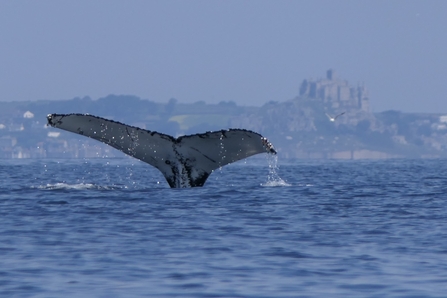Winter is the time that humpback whales are most likely to visit our Cornish waters.
More and more individuals are being seen in UK seas every year and sightings have increased significantly in the last five years in Cornwall, with at least 30 sightings recorded so far this winter.
Reaching up to 18m long, these incredible animals are found throughout the world's oceans and perform some of the longest migrations of any mammal, with journeys up to 16,000 km recorded. Their population is believed to be 140,000 worldwide.
Humpbacks feast on fish and krill in productive cooler waters and then travel to tropical seas to give birth. They have a lifespan of between fifty and seventy five years. In UK seas, they are normally spotted alone or in pairs. It is believed they come into the shallow seas around Cornwall to feed. One theory is that the whales that stop off here over the winter are juveniles or non breeding adults, feeding-up on shoals of fish.


